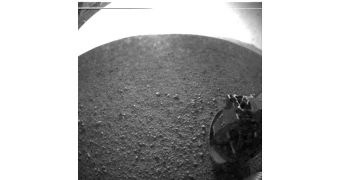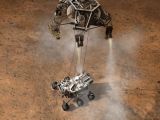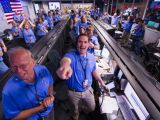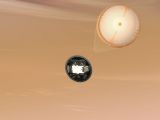Today, at precisely 5.32 a.m. GMT (August 5th, 10.32 p.m. PDT) NASA's Mars Science Laboratory (MSL) spacecraft successfully landed the Curiosity rover on Mars.
This was the most advanced Mars landing that the humankind has ever attempted, and has proved a success so far.
After a journey of around 350 million miles (560 million kilometers) from Earth (36 weeks), the rover arrived at its designated landing spot in the Gale Crater.
Although the landing was successful, there’s no telling on whether the 10 science instruments Curiosity carries were not affected by the maneuvers.
In fact, the next several weeks (most probably, the entire month of August) will be spent testing the equipment and the rover, to ensure that nothing has been damaged during the flight.
Soon after touchdown, NASA issued an official announcement on the matter, stating that the spacecraft that carried Curiosity managed to successfully finalize all the steps of the most complex landing ever attempted on Mars (an innovative landing system, never tested before).
About 17 minutes before landing, NASA's Mars Science Laboratory carrying the Curiosity rover detached itself from the cruise stage that carried it from Earth. Thrusters on the back shell oriented the spacecraft with the heat shield forward in preparation of entering the Martian atmosphere.
The Mars Science Laboratory Entry, Descent and Landing Instrument (MEDLI) suite started taking measurements to assess the performance of the heat shield to help in the design of future missions.
Seven minutes before landing (the "7 minutes of terror"), MSL enters the atmosphere at a velocity of around 13,000 miles per hour. Due to friction with the atmosphere, it slows down to about 900 miles per hour. The entry point was not directly above the landing site.
“The parachute, which is 51 feet (nearly 16 meters) in diameter, deploys about 254 seconds after entry, at an altitude of about 7 miles (11 kilometers) and a velocity of about 900 mph (about 405 meters per second),” NASA announced.
After the parachute detached itself from the spacecraft, descent-stage retrorockets fired, and the rover was lowered to the ground in a "sky crane" maneuver. As soon as the rover touched Mars’ surface, the connecting cords were severed, and the spacecraft flew out of the way.
"The Seven Minutes of Terror has turned into the Seven Minutes of Triumph," said NASA Associate Administrator for Science John Grunsfeld. "My immense joy in the success of this mission is matched only by overwhelming pride I feel for the women and men of the mission's team."
Curiosity weighs about a ton and was equipped with the most advanced scientific equipment ever sent to Mars. NASA equipped the rover with instruments that are the first of the kind to ever arrive on the red planet, such as a laser-firing instrument designed to check elemental composition of rocks from a distance.
“The rover will use a drill and scoop at the end of its robotic arm to gather soil and powdered samples of rock interiors, then sieve and parcel out these samples into analytical laboratory instruments inside the rover,” NASA explains.
“To handle this science toolkit, Curiosity is twice as long and five times as heavy as Spirit or Opportunity. The Gale Crater landing site places the rover within driving distance of layers of the crater's interior mountain. Observations from orbit have identified clay and sulfate minerals in the lower layers, indicating a wet history.”
Curiosity will spend the next two years investigating the central mountain in the Gale Crater, which is more than 5km high. The rover will search for evidence that the Mars environment might have sustained microbial life at some point.
The rover has already sent home the first images after landing, showing its shadow on the rocky surface of the planet, and one of its wheels, and should start sending more of them, of better resolution even, in the next few days.

 14 DAY TRIAL //
14 DAY TRIAL // 


